In the ever-changing world of digital marketing, staying ahead of the curve is critical for healthcare brands looking to effectively reach Patient X. With the impending demise of third-party cookies, marketers must adapt to continue connecting with prospective patients in impactful ways. This comprehensive guide will investigate the challenges of the cookieless future and provide actionable insights on navigating this changing landscape.
The cookieless era: a paradigm shift in digital marketing
Third-party cookie deprecation, beginning with Google Chrome in 2024, marks a significant turning point in the digital marketing landscape. Cookies have played a critical role in enabling personalized advertising campaigns. They have been the primary method for tracking user behavior and targeting ads. However, privacy and data security concerns have prompted major browsers to phase out this tracking technology.
Google’s plan to gradually phase out third-party cookies presents both challenges and opportunities for marketers. Beginning with 1% of users in Q1 2024 many industries will face significant disruptions. Although the healthcare industry, with its strict regulations and privacy requirements, may be better positioned to weather the storm. Health and pharma brands can thrive in the cookie-less future by leveraging alternative strategies and technologies.
Contextual targeting: unlocking the power of relevance
Contextual targeting is one of the most important strategies for healthcare brands to adopt in the cookie-free era. Patient journeys are distinct from traditional buyer journeys, requiring extensive research and information gathering. Advertisers can capture high-intent audiences by placing ads alongside content relevant to a prospective patient’s symptoms, diagnoses, and treatments. This does not require reliance on cookies or user data collection.
Ads can be tailored to specific conditions or symptoms using programmatic advertising, which allows advertisers to filter websites and set rules for maximum exposure. Contextual marketing can extend beyond display ads on web pages to other mediums such as podcasts and connected TV programs. While the granularity of targeting may be limited in these formats, advancements in natural language processing and AI chatbots hold the potential for more sophisticated audio and video keyword targeting in the future.
Anonymized audiences: uncovering insights without cookies
In the absence of third-party cookies, health brands can refine their targeting strategies by using anonymized audiences built with real-world data. AdTheorent emerged as key players in modeling compliant lookalike audiences based on demographic trends discovered in anonymized claims data. These predictive audiences tailored to specific health conditions are an exciting alternative to cookie-based targeting.
Early results show that anonymized audience click-through rates are three times higher than similar prospecting audiences in the space. This demonstrates the efficacy of leveraging real-world data to identify and engage with relevant audiences while adhering to privacy regulations.
A multi-channel approach: maximizing touchpoints in a cookieless world
While programmatic advertising is valuable, it is essential for healthcare brands to use a multi-channel approach maximizing reach and engagement. Platforms like Facebook and Google, which remain lower-funnel channels, can still play a vital role in retargeting. By leveraging programmatic as a complementary strategy, brands can enhance their overall marketing effectiveness.
As Google develops its “Privacy Sandbox” and users gain more control over interest targeting, it is crucial for health brands to maintain an omnipresent presence across various channels. This approach ensures that prospective patients encounter the brand consistently, fostering trust and familiarity. By diversifying their advertising efforts and embracing a holistic marketing approach, health brands can thrive in the cookieless future.
The challenges of a cookieless future: navigating the uncertainty
While the cookieless future presents opportunities for innovation and growth in healthcare marketing, it is important to acknowledge the challenges ahead. A survey revealed that three-quarters of companies believe the removal of third-party cookies will have a negative impact on their business. Publishers are projected to lose $10 billion in revenue from the shift towards cookieless advertising.
The onus is on third-party data providers to pivot and develop novel solutions for targeting without cookies. Failure to do so may result in a reliance on major players like Facebook and Google, which could further consolidate data privacy and profitability. Advertisers must stay informed and adapt to the changing landscape to minimize disruptions and ensure continued success.
The reality of the cookieless landscape: leveraging existing strategies
Despite the challenges, digital advertisers have several options for navigating the cookieless landscape. Using first- and second-party data, as well as interest-based and contextual targeting, can provide valuable insights and opportunities for engagement. Google’s decision to postpone the phase-out of third-party cookies until the second half of 2024 allows for more experimentation and adaptation.
Brands must be willing to adopt new ways of optimizing their advertising efforts for success. By partnering with a media agency that is well adept in navigating the changing landscape, along with all the red tape that goes with Health and pharma advertising, brands will not get left behind; They can actually lead the way.
Conclusion: embracing the future of healthcare marketing
The cookieless future may pose challenges, but it also presents opportunities for innovation and growth in healthcare marketing. By embracing contextual targeting, leveraging anonymized audiences, adopting a multi-channel approach, and staying informed about privacy-focused alternatives, health brands can continue to connect with prospective patients in a relevant and impactful manner.
As the digital marketing landscape evolves, it is crucial for healthcare brands to partner with agencies that possess deep expertise in digital media, advertising, and analytics. By harnessing the power of data-driven strategies and innovative technologies, health brands can overcome the challenges of the cookieless future and thrive in the ever-changing healthcare marketing landscape.
By Lori Goldberg, Silverlight, originally published on PharmaLive



